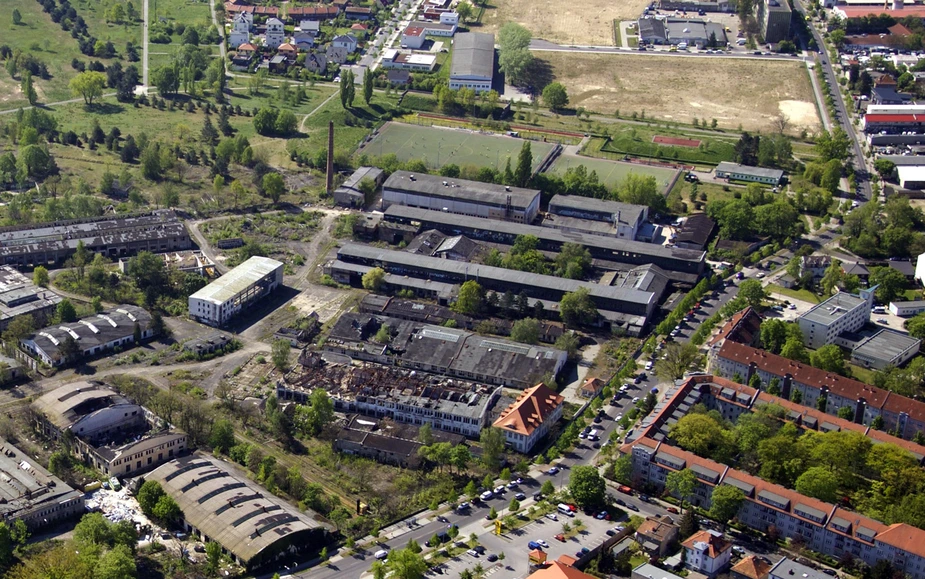New spaces for clever companies
Along Segelfliegerdamm, there is a lot to do
Not all the plots in the Johannisthal-Adlershof development area are ready for marketing right from the start. Particularly along Segelfliegerdamm, there was, and still is, a lot to do. In the west, on the former site of VEB Medizin Geräte Berlin, the groundwork was quite literally being laid for small companies. Further in the north, the area belonging to the Müller heirs is also on the verge of a breakthrough.
When Adlershof Projekt GmbH acquired a 40,000 square metre plot on Walther-Huth-Straße from the state of Berlin six years ago, it did not look particularly appealing: partially dilapidated huts made the area look quite bleak at first glance, but the damage that couldn’t be seen was even worse: the groundwater and soil were contaminated. “A lot of work was done to make the area usable again. A private investor probably wouldn’t have got involved,” says Ute Hübener, Head of Sales at Adlershof Projekt GmbH. The fundamental redevelopment was only made possible through federal funds to promote regional infrastructure (Gemeinschaftsaufgabe: Verbesserung der regionalen Wirtschaftsstruktur), which were released by the Berlin Senate Department for Economics, Technology and Research. Hübener: “It is hugely important for the area that there is this sort of funding.”
In particular, small businesses that are setting up around Segelfliegerdamm will benefit from this, beginning with confectioners Konditorei Engelmann who are building a production facility on Walther-Huth-Straße that is around 2,000 square metres. Residents and visitors should be pleased that there will also be a café and a show bakery that will offer courses on baking, decorating, etc. for adults and children alike. MSW Displays are also moving here. They specialise in printed products, display design, and trade fair stand construction, and are building on the new street parallel to Walther-Huth-Straße. “We are currently talking to another company from the media industry about a plot that measures more than 10,000 square metres. If we can use the depth of the area, small plots of 2,000 square metres each can be cut and used for suitable technology companies.”
This is attractive because there are hardly any compact plots available for small companies in the inner area of the campus, never mind in the city centre, where residential infill development is forcing out more and more small commercial units. “It is therefore important that Berlin creates more opportunities and makes it possible for companies to set up,” adds Hübener.
Things are moving as well on the waste land in the north east corner of the development area, which Arthur Müller placed at the disposal of aircraft designer. After years of uncertainty, an agreement with the Müller heirs is just around the corner, meaning that the last large undeveloped plot of land will soon be made usable again. The area that lies on Germany’s once oldest airfield, which was founded by Müller and later used by Kombinat Kühlautomat Berlin, is now at the heart of the high-tech location. It will be atempted to retain a section of the old hangar. The refurbishment of a large number of contaminated and sealed sites will of course prove to be a challenge, but this is something that the Senate and project developers are used to.
by Chris Löwer
